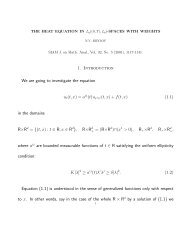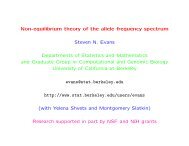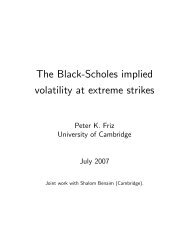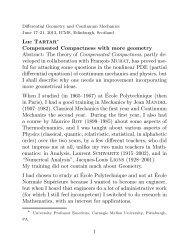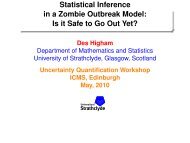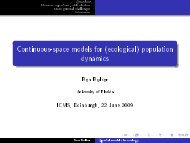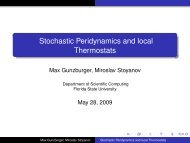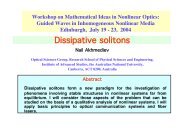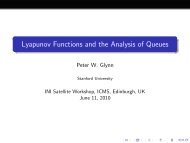A Mini-course on EllipticâHyperbolic Equations - ICMS
A Mini-course on EllipticâHyperbolic Equations - ICMS
A Mini-course on EllipticâHyperbolic Equations - ICMS
Create successful ePaper yourself
Turn your PDF publications into a flip-book with our unique Google optimized e-Paper software.
Writing the characteristic equati<strong>on</strong> for Lu = 0, we haveKdη 2 + γdξ 2 = 0. (4)If K and K y can vanish simultaneously, then it is possible to haveγ ≠ 0 <strong>on</strong> the s<strong>on</strong>ic curve, in which case eq. (4) assumes the formγdξ 2 = 0, γ ≠ 0. So in the case K = 0 = K y the characteristiclines satisfy ξ = dξ = 0. That is, they degenerate <strong>on</strong> the s<strong>on</strong>iccurve, and the case K = 0 = K y corresp<strong>on</strong>ds to equati<strong>on</strong>s ofKeldysh type.A tedious algebraic calculati<strong>on</strong> will show directly that if K and K ydo not vanish simultaneously, then the operator L is of Tricomitype.That is to say, the Tricomi operator (K (x, y) = y) is of realprincipal type but the Keldysh operator (K (x, y) = x) is not, anda lower-order perturbati<strong>on</strong> of a well-behaved operator of Keldyshtype can be badly behaved.




